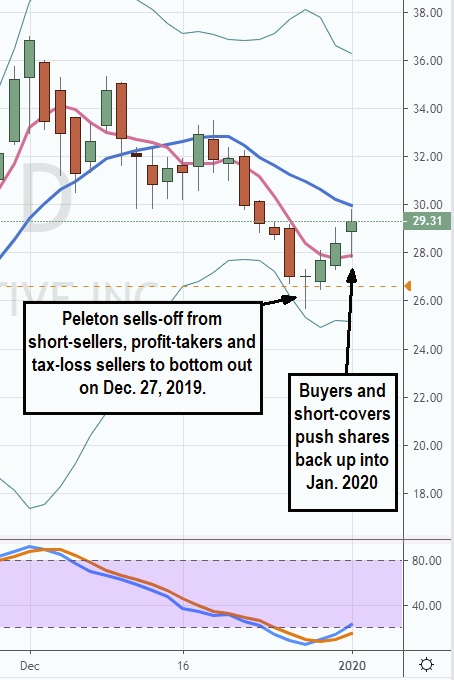The U.S. stock market is composed of over 6,000 individual stocks that fluctuate, contract and expand daily like a vast ocean. While the Dow Jones Industrial Average tends to be the most recognized benchmark index, it is limited to just 30-stocks. The Standard and Poor’s 500 (S&P 500) index is a more comprehensive benchmark composed of 505 stocks divided into 11-sectors. The S&P 500 index can be tracked using the Select Sector SPDR S&P 500 Trust ETF (NYSEARCA: SPY), which is the world’s largest ETF. I prefer the liquidity and accuracy of the SPDRs for tracking the
U.S. Sector ETFs, but there are many others including Vanguard, iShares, and Schwab with similar ETFs.
Dissecting the SPY ETF
The overall performance of the SPY is derived by the performance of its individual sectors, which can be tracked and traded with their own respective ETFs. However, not every sector equally impacts the S&P 500 since it’s a market capitalization (market-cap) weighted index, which means stocks with the largest market-caps tend to have a greater impact on performance. Prior to its seven-for-one stock split, Apple, Inc. (NASDAQ: AAPL) shares alone were responsible for up to eight-percent of the S&P 500 price movements resulting in exceptional price volatility anchored to AAPL shares. While AAPL still holds a four-percent weighting, other stocks have closed the gap in market-cap to dampen its impact with Microsoft (NASDAQ: MSFT) also holding a four-percent weighting. To further spread out the distribution of index impact, S&P created a new sector in 2018 and transferred many large-cap technology companies like Alphabet, Inc. (NASDAQ: GOOGL), Facebook (NYSE: FB) and Netflix (NASDAQ: NFLX) into the S&P Communications Services Sector (NYSEARCA: XLC) from the S&P Information Technology Sector (NYSEARCA: XLK) further spreading out the FAANG stocks. However, these two sectors alone carry a hefty 33-percent weighting on the overall S&P 500 index and the best performing sectors in 2019.
Mechanics of the Market
Money flow rotates between the sectors from funds and institutions. By tracking the SPDR ETF associated to each sector, investors can gauge where the money flow is being concentrated. Strong markets will indicate all sectors move higher simultaneously which also indicates deep market breadth. Be aware when only a third or less the sectors are rising and driving up the SPY, which could indicate distribution in the weaker sectors. This is one of the reasons why the 2019 market rally was one of the most ‘hated’ rallies due to the concentration for most of the year in the top three sectors. Healthy markets tend to have at least 80-percent of the sector rising simultaneously.
New Year, New Leaders?
Underperforming sectors tend to get a lot of attention into the new year as money flow seeks out alpha. The Energy Sector SPDR ETF (NYSEARCA: XLE), Utilities Sector SPDR (NYSEARCA: XLU) and Health Care Sector SPDR ETF (NYSEARCA: XLV) were the worst-performing sectors to watch for potential rebounds in 2020. However, this also indicates the potential for a market sell-off since these are defensive sectors that see money flow during “risk-off” phases as funds seek safety buffered with consistent dividend distributions.

January Effect Lifts the Underdogs
Another reason for strength in the underperforming sectors is the January Effect where funds buy back into the stocks they unloaded for tax-loss selling in the prior year. To avoid wash sale rules, they must wait a minimum of 30-days. This is a key factor behind the ‘Dogs of the Dow’ investing strategy of buying last year’s losers at the beginning of the new year. Active and swing traders pay attention to exceptionally weak stocks in December for potential rallies in January. This is especially apparent if the SPY exhibits strength. A stock that comes to mind is Peloton Interactive, Inc. (NASDAQ: PTON) which sold-off as a result of many factors including controversial ad campaigns and short-sellers. After peaking at 37.02 in Dec. 2, 2019, PTON proceeded to sell-off sharply, against the backdrop of a strong SPY, through Dec. 27th where a capitulation bottom was made at 25.67. Peloton then proceeded to rally up to 29.82 by Jan. 2, 2020 as short-sellers cover and push capital gains into the new year, while profit takers and tax-loss sellers’ step back in. The same mechanics that works for ETFs can be applied to individual stocks.
Before you make your next trade, you'll want to hear this.
MarketBeat keeps track of Wall Street's top-rated and best performing research analysts and the stocks they recommend to their clients on a daily basis.
Our team has identified the five stocks that top analysts are quietly whispering to their clients to buy now before the broader market catches on... and none of the big name stocks were on the list.
They believe these five stocks are the five best companies for investors to buy now...
See The Five Stocks Here
If a company's CEO, COO, and CFO were all selling shares of their stock, would you want to know? MarketBeat just compiled its list of the twelve stocks that corporate insiders are abandoning. Complete the form below to see which companies made the list.
Get This Free Report
Like this article? Share it with a colleague.
Link copied to clipboard.